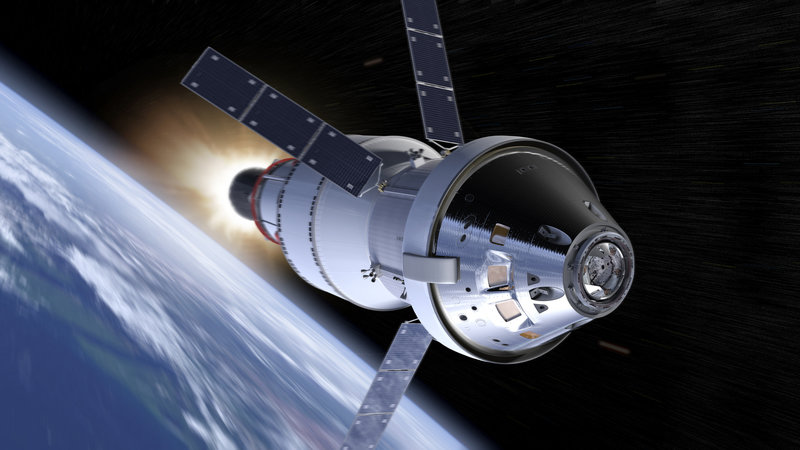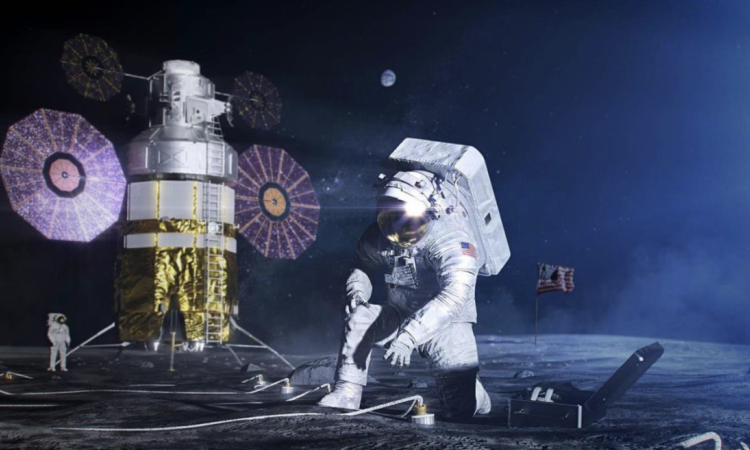The Future of Tech in Space Exploration: Advancements and Ambitions
As humans, we have always been fascinated by the mysteries of space. The vastness and potential of the cosmos ignite our curiosity and drive us to explore beyond the confines of our planet. Over the years, technological advancements have played a crucial role in enabling us to venture into space and uncover its secrets. But what does the future hold for the intersection of technology and space exploration? What advancements can we expect, and what are our ambitions for this exciting field?


The Future of Tech in Space Exploration: Advancements and Ambitions
Space exploration has always been an area of fascination and wonder for scientists, researchers, and the general public alike. Over the years, advancements in technology have transformed our understanding of space and our ability to explore it. As we look towards the future, the potential for further technological advancements in space exploration is both exciting and ambitious. From new propulsion systems to advanced robotics, the future of tech in space exploration holds great promise.
One aspect of the future of tech in space exploration is the development of innovative propulsion systems. Traditional chemical rockets have been the primary means of launching spacecraft into space. While they have served us well in the past, they have limitations in terms of speed and fuel efficiency. However, new propulsion technologies like ion thrusters and nuclear propulsion systems are on the horizon. These systems offer the potential for faster travel and greater fuel efficiency, enabling us to explore further into space than ever before. For example, NASA’s ion drive has already set records for the longest propulsion system test in history, demonstrating the potential of this technology.
Another exciting advancement in space exploration technology is the use of robotics. Robots can perform tasks and gather data in hostile environments where humans cannot venture, making them invaluable for space exploration. From rovers on Mars to autonomous spacecraft, robotics is revolutionizing our ability to explore space. Advanced robotics can be used for a variety of purposes, such as conducting experiments, repairing spacecraft, and even building structures on other planets. For instance, NASA’s Mars Rover has been instrumental in collecting data and providing valuable insights about the Red Planet.
The future of tech in space exploration also includes advancements in communication systems. As we venture further into space, the need for efficient and reliable communication becomes crucial. Currently, there is a delay in communication between Earth and spacecraft due to vast distances. However, emerging technologies like laser communication systems and satellite networks can significantly reduce communication delays. For example, NASA has tested laser communication with a satellite orbiting the moon, showcasing the potential for faster and more efficient communication in space.
The advancements and ambitions in space exploration technology are not limited to just propulsion systems, robotics, and communication. There are numerous other areas where technology is driving innovation in space exploration. These include developments in materials science for constructing spacecraft and habitats, advancements in life support systems for extended space missions, and the use of artificial intelligence for data analysis and spacecraft autonomy. Each of these areas contributes to our overall progress in space exploration and opens up new possibilities for discoveries and advancements.
The Potential of Renewable Energy in Space Exploration
Renewable energy sources have been gaining popularity on Earth, and their potential in space exploration is also being explored. Solar power is one of the most promising renewable energy sources for space missions. Solar panels can provide a reliable and sustainable source of energy for spacecraft, reducing reliance on traditional fuel-based systems. The advancements in solar cell technology, such as the use of highly efficient and lightweight materials, enable more power to be generated in a smaller space. This is particularly important for long-duration missions where power availability is crucial.
In addition to solar power, other renewable energy sources like nuclear power are also being considered for space exploration. Nuclear propulsion systems have the potential to provide enormous amounts of energy for propulsion, enabling faster travel and reducing mission durations. Advanced nuclear reactors can also be used to generate electricity for long-duration missions, where solar power may not be feasible due to long periods of darkness. However, the use of nuclear power in space missions presents unique challenges and requires stringent safety measures.
Renewable energy sources not only provide a sustainable and reliable source of power for space missions but also contribute to environmental sustainability in space. As we continue to explore and potentially colonize other celestial bodies, it is essential to reduce our environmental impact. Traditional propulsion systems that rely on chemical fuels can contribute to pollution and resource depletion. By harnessing renewable energy sources, we can minimize our carbon footprint and promote sustainable practices in space exploration.
The Challenges of Tech Advancements in Space Exploration
While the future of tech in space exploration holds great promise, there are several challenges that need to be overcome. One of the main challenges is the cost associated with developing and implementing new technologies. Space missions are already expensive endeavors, and incorporating cutting-edge technologies can further increase costs. This requires a balance between ambition and budget constraints to ensure that resources are allocated efficiently.
Another challenge is the reliability and durability of new technologies in the harsh conditions of space. Spacecraft and equipment need to withstand extreme temperatures, radiation, and vacuum, amongst other challenges. Extensive testing and validation processes are required to ensure that technologies can function optimally in these conditions and have long lifespans.
Furthermore, international collaboration and cooperation are crucial for the future of tech advancements in space exploration. Space exploration has traditionally been a collaborative effort between nations, and it is important to continue fostering partnerships to share knowledge, resources, and expertise. Collaboration also helps to address common challenges and pool resources for ambitious projects that may be beyond the capabilities of individual nations.
Lastly, ethical considerations and regulations play a significant role in the future of tech advancements in space exploration. As we venture further into space, issues such as space debris management, planetary protection, and the preservation of celestial bodies need to be addressed. It is essential to establish guidelines and regulations to ensure responsible and sustainable practices in space exploration.
Conclusion
The future of tech in space exploration is an exciting and ambitious one. Advancements in propulsion systems, robotics, communication, and renewable energy offer great potential for further exploration and discovery. However, there are challenges that need to be overcome, such as cost, reliability, international collaboration, and ethical considerations. By addressing these challenges and harnessing the power of technology, we can continue to push the boundaries of space exploration and unlock new possibilities. The future of tech in space exploration is brighter than ever before, and it is up to us to seize the opportunities that lie ahead.
For more information on the future of tech in space exploration and the latest advancements, visit NASA’s website.
The Future of Tech in Space Exploration: Advancements and Ambitions
- 1. Space technology is advancing rapidly, enabling humans to explore deeper into the universe.
- 2. Ambitious missions, such as manned Mars missions, are being planned by space agencies and private companies.
- 3. Artificial intelligence and robotics are revolutionizing space exploration, enabling autonomous missions and efficient resource utilization.
- 4. The development of reusable rockets, like SpaceX’s Falcon 9, is making space travel more affordable and sustainable.
- 5. Space mining and colonization are becoming realistic goals, with the potential for extracting resources from celestial bodies and establishing human settlements beyond Earth.

In the future, technology will play a crucial role in space exploration.
Advancements like reusable rockets and space tourism will make space more accessible.
Meanwhile, ambitious projects aim to establish a human presence on Mars and beyond.
These developments will inspire young minds and lead to exciting opportunities in the field.
The future of tech in space is bright, and the possibilities are limitless!


